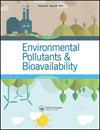Mycoremediation (bioremediation with fungi) – growing mushrooms to clean the earth
Q3 Chemical Engineering
引用次数: 105
Abstract
Abstract Some of the prospects of using fungi, principally white-rot fungi, for cleaning contaminated land are surveyed. That white-rot fungi are so effective in degrading a wide range of organic molecules is due to their release of extra-cellular lignin-modifying enzymes, with a low substrate-specificity, so they can act upon various molecules that are broadly similar to lignin. The enzymes present in the system employed for degrading lignin include lignin-peroxidase (LiP), manganese peroxidase (MnP), various H2O2 producing enzymes and laccase. The degradation can be augmented by adding carbon sources such as sawdust, straw and corn cob at polluted sites.真菌修复(真菌生物修复)-种植蘑菇来清洁地球
摘要综述了利用真菌(主要是白腐真菌)净化污染土地的一些前景。白腐真菌在降解多种有机分子方面如此有效是由于它们释放细胞外木质素修饰酶,具有低底物特异性,因此它们可以作用于与木质素大致相似的各种分子。系统中用于降解木质素的酶包括木质素过氧化物酶(LiP)、锰过氧化物酶(MnP)、各种产生H2O2的酶和漆酶。通过在污染场地添加木屑、秸秆和玉米芯等碳源,可以增强降解。
本文章由计算机程序翻译,如有差异,请以英文原文为准。
求助全文
约1分钟内获得全文
求助全文
来源期刊
CiteScore
1.62
自引率
0.00%
发文量
0
审稿时长
1 months
期刊介绍:
Chemical Speciation & Bioavailability ( CS&B) is a scholarly, peer-reviewed forum for insights on the chemical aspects of occurrence, distribution, transport, transformation, transfer, fate, and effects of substances in the environment and biota, and their impacts on the uptake of the substances by living organisms. Substances of interests include both beneficial and toxic ones, especially nutrients, heavy metals, persistent organic pollutants, and emerging contaminants, such as engineered nanomaterials, as well as pharmaceuticals and personal-care products as pollutants. It is the aim of this Journal to develop an international community of experienced colleagues to promote the research, discussion, review, and spread of information on chemical speciation and bioavailability, which is a topic of interest to researchers in many disciplines, including environmental, chemical, biological, food, medical, toxicology, and health sciences.
Key themes in the scope of the Journal include, but are not limited to, the following “6Ms”:
Methods for speciation analysis and the evaluation of bioavailability, especially the development, validation, and application of novel methods and techniques.
Media that sustain the processes of release, distribution, transformation, and transfer of chemical speciation; of particular interest are emerging contaminants, such as engineered nanomaterials, pharmaceuticals, and personal-care products.
Mobility of substance species in environment and biota, either spatially or temporally.
Matters that influence the chemical speciation and bioavailability, mainly environmentally relevant conditions.
Mechanisms that govern the transport, transformation, transfer, and fate of chemical speciation in the environment, and the biouptake of substances.
Models for the simulation of chemical speciation and bioavailability, and for the prediction of toxicity.
Chemical Speciation & Bioavailability is a fully open access journal. This means all submitted articles will, if accepted, be available for anyone to read, anywhere, at any time. immediately on publication. There are no charges for submission to this journal.

 求助内容:
求助内容: 应助结果提醒方式:
应助结果提醒方式:


